
AM Journal of Art and Media Studies
Scope & Guideline
Empowering Voices in the World of Art and Communication.
Introduction
Aims and Scopes
- Interdisciplinary Research:
The journal encourages a blend of disciplines, merging art, science, philosophy, and social studies to deepen the understanding of contemporary aesthetic practices. - Focus on Contemporary Issues:
It highlights current social, political, and environmental challenges as they relate to artistic expression, providing insights into how art can respond to and critique these issues. - Exploration of Aesthetic Experience:
The journal delves into the role of representation, perception, and emotional engagement in the aesthetic experience, considering how these factors shape our understanding of art. - Innovative Methodologies:
It promotes the use of new methodologies, including digital and participatory practices, to explore and document artistic processes and experiences. - Sustainability and Climate Change:
A significant focus on how art interacts with concepts of sustainability and climate change, addressing the urgent need for ecological awareness in artistic practices. - Cultural Critique and Activism:
The journal serves as a site for cultural critique, exploring how artistic practices can contribute to social movements and activism, particularly in response to issues of identity and power.
Trending and Emerging
- Digital and Virtual Art Practices:
There has been a significant increase in research addressing digital and virtual art forms, including NFTs and virtual reality, as artists explore new avenues for expression in the digital age. - Climate and Ecological Art:
Papers focusing on the intersection of art and ecological issues are on the rise, highlighting how artists engage with climate change and sustainability as critical themes in their work. - Intersectionality in Art:
An emerging trend is the exploration of intersectional identities and experiences in art, examining how race, gender, and sexuality inform artistic practices and narratives. - Participatory and Community-Based Art:
Research on participatory art and community engagement is gaining momentum, reflecting a growing recognition of art's role in social activism and collective experiences. - Transdisciplinary Approaches:
There is a notable trend towards transdisciplinary research that integrates various fields, such as science, technology, and social studies, emphasizing the interconnectedness of art with broader societal issues. - Aesthetics of Care and Healing:
An emerging focus on the aesthetics of care and healing practices in art, particularly in relation to health and well-being, is becoming increasingly relevant in the journal's publications.
Declining or Waning
- Traditional Art Forms:
There has been a noticeable decline in papers focused exclusively on traditional art forms without interdisciplinary connections, reflecting a shift towards more dynamic and contemporary practices. - Historical Analysis of Art Movements:
Research centered on historical art movements appears to be less prominent, as the journal increasingly prioritizes contemporary and emergent themes over retrospective analyses. - Narrowly Defined Aesthetic Theories:
Papers that strictly adhere to classical aesthetic theories, without incorporating broader cultural or political contexts, are becoming less frequent, suggesting a move towards more integrated theoretical frameworks. - Static Art Criticism:
Static or conventional forms of art criticism that do not engage with current social issues or technological advancements are waning, as the journal seeks more engaged and responsive critiques. - Local Art Practices:
Research focusing solely on local art practices without a global or transdisciplinary perspective is diminishing, indicating a preference for studies that connect local phenomena to larger, global contexts.
Similar Journals

STYLE
Transforming Perspectives in Contemporary Literary StudiesSTYLE, published by Penn State University Press, is a premier journal dedicated to advancing the fields of Literature and Literary Theory. With its impactful presence in the academic landscape, it holds a prestigious Q1 category rank in its field as of 2023, and it is currently positioned 44th among 1,106 journals in Arts and Humanities Literature and Literary Theory, reflecting a remarkable 96th percentile ranking in Scopus. Although not an Open Access journal, STYLE is committed to enriching scholarship from 2002 through 2024, providing a vital platform for researchers, professionals, and students to explore and disseminate cutting-edge literary research and theoretical innovations. By encouraging critical dialogues and interdisciplinary approaches, STYLE plays an essential role in shaping contemporary literary studies and remains a trusted source for high-quality scholarship in the humanities.
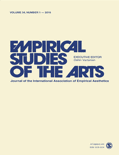
Empirical Studies of the Arts
Pioneering Interdisciplinary Research in Literature, Music, and Visual ArtsEmpirical Studies of the Arts is a prominent academic journal published by SAGE Publications Inc, specializing in the interdisciplinary fields of Literature, Music, and Visual Arts and Performing Arts. With an impressive Q1 ranking in multiple categories for 2023, this journal serves as a crucial platform for scholars, researchers, and practitioners engaged in the empirical exploration of arts and their influence on society. Established to foster rigorous inquiry, the journal features peer-reviewed articles that delve into both qualitative and quantitative research methodologies. This commitment to maintaining a high academic standard is evident in its Scopus rankings, which place it in the 99th percentile in Literature, 96th percentile in Visual Arts, and 92nd percentile in Music, making it a vital resource for those seeking to enrich their understanding of arts-related phenomena. While the journal does not currently offer open access options, it remains dedicated to advancing knowledge through comprehensive research, contributing significantly to the ongoing discourse in the arts.
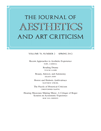
JOURNAL OF AESTHETICS AND ART CRITICISM
Fostering Interdisciplinary Dialogues in the ArtsThe Journal of Aesthetics and Art Criticism, published by Oxford University Press, stands as a premier platform for scholarly discourse in the realms of music, philosophy, and the visual and performing arts. Established in 1996 and continuing through 2024, this journal has achieved remarkable recognition, being ranked in the Q1 category across several disciplines, and securing prestigious positions in various Scopus rankings: 29th in Music, 50th in Visual Arts and Performing Arts, and 151st in Philosophy, showcasing its essential contribution to arts and humanities scholarship. While not an open-access journal, its rich repository of articles offers invaluable insights for researchers, professionals, and students alike, fostering a deeper understanding of aesthetics and critical theory. The journal's commitment to interdisciplinary approaches opens pathways for innovative dialogue, making it an indispensable resource for anyone engaged in the study and appreciation of the arts.
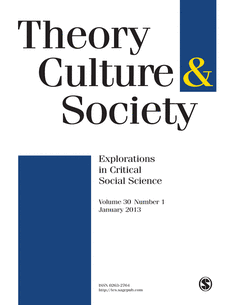
THEORY CULTURE & SOCIETY
Bridging theory and practice in contemporary culture.THEORY CULTURE & SOCIETY is a leading peer-reviewed journal published by SAGE PUBLICATIONS LTD, dedicated to the exploration and critique of social theory within the broader context of contemporary social sciences. Since its inception in 1982, this esteemed publication has fostered critical dialogue and interdisciplinary research, making significant contributions to the fields of sociology and political science, as evidenced by its impressive performance in the latest Scopus rankings, placing it in the top 20% of journals in both categories. With a strong Q1 classification in 2023, it consistently engages scholars, researchers, and students alike, offering insights and perspective on the dynamic interplay between culture, society, and theory. Although not an open-access journal, its commitment to advancing knowledge makes it an essential resource for those navigating the complexities of social phenomena in a rapidly changing world. Published from the United Kingdom, THEORY CULTURE & SOCIETY stands at the forefront of critical scholarship, making it an indispensable read for anyone interested in the development of contemporary social thought and theory.

LEONARDO
Where Creativity Meets TechnologyLEONARDO is a distinguished interdisciplinary journal published by MIT Press, renowned for its exploration of the dynamic interplay between art, science, and technology. With its ISSN 0024-094X and E-ISSN 1530-9282, LEONARDO has made significant contributions to the fields of Computer Science Applications, Engineering, Music, and the Visual Arts and Performing Arts, achieving Q1 rankings in the latter two categories as of 2023. This journal serves as a critical platform for researchers, professionals, and students seeking to understand and advance the integration of artistic and scientific inquiry. Although not an open access journal, LEONARDO continues to be an important resource from its home base in the United States, providing a wealth of knowledge and fostering innovation in its converged coverage from 2002 to 2024. With an impact factor reflecting its significant role in academia, LEONARDO invites contributions that push the boundaries of conventional thought and inspire interdisciplinary collaboration.

Technoetic Arts
Transforming Perspectives: Where Art Meets TechnologyTechnoetic Arts, an influential journal published by INTELLECT LTD, serves as a vital platform for interdisciplinary research at the intersection of the arts, philosophy, and technology. Established in 2003, this journal has evolved to encompass a diverse range of innovative topics, while focusing on the critical examination of art's future amid rapid technological advances. With an ISSN of 1477-965X and E-ISSN 1758-9533, it appeals to researchers, professionals, and students interested in explorations within the fields of Computer Science Applications, Human-Computer Interaction, Philosophy, and Visual Arts and Performing Arts. Although currently not open access, Technoetic Arts is recognized for its rigorous scholarship, as evidenced by its Scopus rankings—achieving the 75th percentile in Visual Arts and Performing Arts. The journal operates from its base in the United Kingdom, offering a unique lens through which contemporary techno-artistic dialogues are examined and promoted. As it aims for continuous improvement in academic merit and relevance, Technoetic Arts remains an essential resource for anyone looking to engage with the transformative power of technology in art.
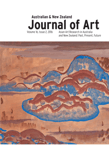
Australian and New Zealand Journal of Art
Bridging Research and Practice in the ArtsThe Australian and New Zealand Journal of Art, published by Taylor & Francis Ltd, stands as a critical platform for scholarly discourse in the fields of art, visual arts, and performing arts, contributing to the ongoing dialogue regarding contemporary artistic practices and methodologies across Australia and New Zealand. With an ISSN of 1443-4318 and an E-ISSN of 2203-1871, this journal invites submissions that strive for innovation and insightful critique, aiming to foster a deeper appreciation and understanding of diverse artistic expressions. Despite its classification in the fourth quartile under the Arts and Humanities categories, it continues to attract attention within its niche, as evidenced by its Scopus rankings, indicating its vital role in the academic landscape. The journal is committed to bridging the gap between research and practice, providing access to a wealth of interdisciplinary knowledge for researchers, professionals, and students alike.

Miranda
Fostering inclusive discourse in the humanities.Miranda (ISSN: 2108-6559, E-ISSN: 2108-6559) is a distinguished open access journal published by UNIV TOULOUSE II-JEAN JAURES, dedicated to advancing knowledge across various fields of the humanities and social sciences. Since its establishment in 2010 as an open access platform, Miranda has aimed to foster inclusive academic discourse by providing unrestricted access to high-quality research. With its commitment to accessibility and scholarly excellence, this journal serves as an essential resource for researchers, professionals, and students seeking to enrich their understanding and engage with contemporary issues within their disciplines. The journal prides itself on its rigorous peer-review process and aims to publish original research, reviews, and interdisciplinary studies that contribute to the evolving landscape of humanities and social science research. Located in Toulouse, France, Miranda is poised to make a significant impact in its field and invites contributions that reflect diverse perspectives and innovative research methodologies.

Arte Individuo y Sociedad
Advancing the Dialogue between Art and Society.Arte Individuo y Sociedad, published by UNIV COMPLUTENSE MADRID, SERVICIO PUBLICACIONES, is a leading Open Access journal dedicated to advancing understanding in the realms of Visual Arts and Performing Arts. With an impressive impact factor that places it in the Q1 category of its field and a remarkable Scopus rank of #92 out of 667, this journal stands as a vital resource for scholars, practitioners, and students alike. Since its inception in 1988, the journal has championed the dissemination of innovative research and critical discourse, fostering a platform where creativity and academia intersect. The converged years from 2010 to 2024 signify a dynamic evolution of the journal, reflecting contemporary issues and developments in visual and performing arts. For those interested in exploring the complex interplay between art and society, Arte Individuo y Sociedad offers essential insights and diverse perspectives in an increasingly interconnected global landscape.
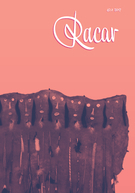
RACAR-REVUE D ART CANADIENNE-CANADIAN ART REVIEW
Exploring the Depths of Canadian Art HistoryRACAR - Revue d'Art Canadienne (Canadian Art Review), published by the University Art Association of Canada, stands as a pivotal academic journal in the field of Canadian art history and cultural studies. With its ISSN 0315-9906 and E-ISSN 1918-4778, RACAR serves as a vital platform for scholarly research and discourse, aiming to illuminate the rich tapestry of Canada's artistic heritage. Although not an open-access journal, it is committed to disseminating high-quality peer-reviewed articles that contribute to the ongoing dialogue about art in Canada. The journal's focus encompasses a diverse range of topics, from contemporary visual arts to historical investigations, appealing to researchers, professionals, and students alike. Based at the Department of History in Art at University of Victoria, RACAR fosters a critical understanding of Canadian art within broader national and global contexts, making it an essential resource for anyone engaged in this vibrant field of study.